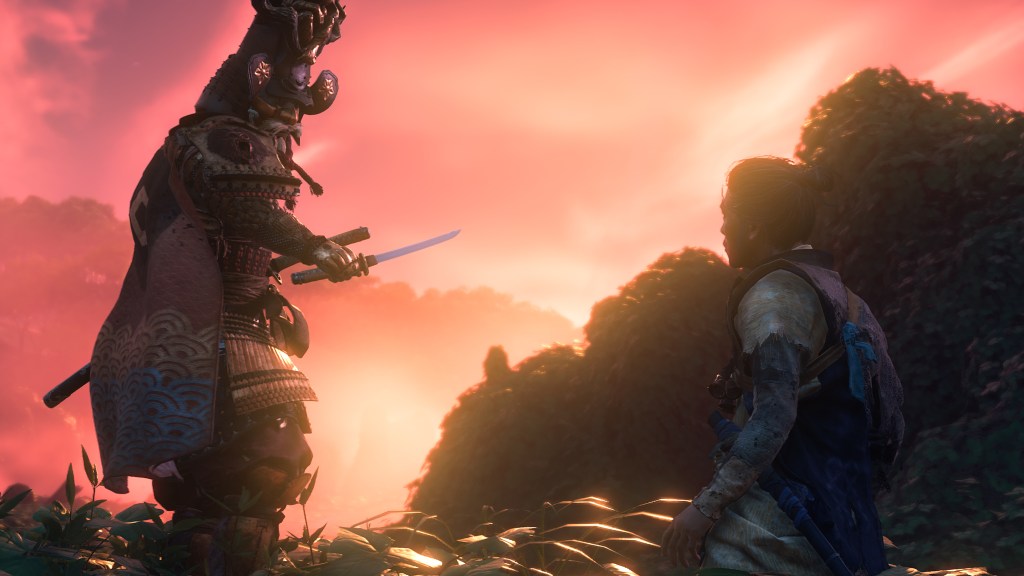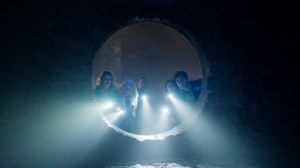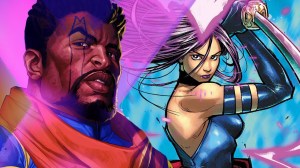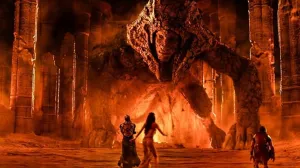Ghost of Tsushima was a huge hit that garnered impressive numbers right out of the gate before eventually, as of September 2024, selling over 13 million copies across PS4, PS5, and PC. According to trophy and achievement stats on PlayStation and Steam, a staggering 35% to 40% of players rolled credits. That’s impressive for any game, especially one that can take dozens of hours to complete. However, those same stat pools reveal only around half of those players finished the Iki Island DLC. And while a lot of DLC is lackluster, Ghost of Tsushima’s big expansion is the best part of an already-fantastic game that players should finally get to before Ghost of Yotei.
Videos by ComicBook.com
Yotei and Iki Island will likely not have any crossover bigger than maybe a small mention in an optional collectible or line of dialogue. The two games take place over 300 years from one another and the two islands have about 870 miles between them. However, it’s more about the storytelling in Iki Island that demonstrates a greater level of nuance and character development when compared to the base Tsushima campaign. That kind of growth is commendable and will hopefully continue with Yotei.
Ghost of Tsushima‘s Iki Island DLC’s Story Is Wonderfully Told

Iki Island doesn’t just throw one of Khotan Khan’s top lackeys at Jin and call it a day. Its main antagonist, The Eagle, is a mystical shaman who is infecting the minds of Iki Island’s inhabitants with a hallucinogenic brew, yet she’s more than just another goon to stab. This ability to kill with an army and a nefarious poison makes her an imposing threat, but this evil concoction ends up being just as much of a mental obstacle as it is a physical one.
After gulping down a whole helping of it, Jin starts being haunted by his past demons and insecurities, which are sudden monologues where the Eagle berates him while targeting his mental weak spots in order to break him. These numerous visions pop up sporadically during gameplay and respond to what the player is doing, be it crouching through an enemy camp or running through a field. They give the Eagle a more ubiquitous presence when compared to Khotan Khan and makes her a multifaceted menace that challenges Jin in two different ways.
But these waking nightmares, more importantly, delve into Jin’s past with the island and help highlight why Iki Island is such a beautiful expansion. It builds upon the short scene shown in the base game where Jin’s father, Kazumasa, is killed. It turns out that fateful scene happened upon Iki Island, and it is given more context throughout the main and side missions. Jin’s father was known as the Butcher of Iki and was sent to Iki Island to slaughter, meaning the Clan Sakai crest is the mark of barbaric pillagers to Iki’s residents. If the Mongolians shake in fear when they see the Ghost of Tsushima, the Iki natives shake with anger when they see a descendent of Clan Sakai; the two sides of Jin are despised for two different reasons by two different factions.
Kazumasa’s lust for conquest has damaged the land and made the locals distrustful of Jin, despite the nobility of his mission to stop the Eagle. However, Jin still holds some resentment toward Iki’s people because they, justified or not, killed his father. This dichotomy opens up the game to speak to the sins of the father, forgiveness, and how one can mature and rebuild after a tragedy.
While these themes are handled well in an overt fashion during the main missions and set the stage for some convincing drama and tension, these ideas are also skillfully touched on in its side missions. The optional “A Helping Hand” quest, for example, has Jin give materials to an optimistic Iki citizen seeking to rebuild his house after the Mongols burned it down. It’s a simple multi-step mission, but it touches upon how Jin’s guilt can be channeled to make amends one person at a time. Even handing in the Sakai banner collectibles yields more backstory about the Sakai invasion from the perspective of someone who suffered through it, giving Jin a way to rid the land of a blasphemous symbol and help a victim heal in the process. Many missions examine this catastrophe in different ways, and this framing elevates what would normally be pretty typical objectives.
Ghost of Tsushima‘s Iki Island DLC Is the Best Part of the Game

Jin’s journey digesting this bloodthirsty conquest gets even more personal since it directly involves his family. Kazumasa was an absolute demon and coming to grips with that reality is a messy road that forces Jin to reassess buried trauma. Iki Island’s flashbacks demonstrate how Kazumasa failed as a father and cleverly sow the seeds for how the rigid samurai order corrupts those it entangles, the latter of which also wonderfully supports the themes in the base game. Jin’s relationship with his mother is explored in the DLC’s peaceful, flute-heavy animal sanctuary activities, too, offering more insight into the person who helped shape Jin’s softer side. These meditative reflections even help contextualize — but not justify — his father’s behavior and round out this surprisingly familial story at the heart of Iki Island. Outside of a couple of strange, offhand lines that feel like they were supposed to be cut, it’s a surprisingly nuanced take on this complicated subject matter.
It’s this layered approach that makes Iki Island an unmissable expansion. While Ghost of Tsushima’s story about the struggles of embracing new tactics to face new threats was thoroughly entertaining, paced out well, and thoughtfully channeled the game’s stylistic flair, it was a little on the predictable side. Iki Island, however, is much more deft with its storytelling. It stars a villain who is an imposing physical threat who also forces Jin to confront his inner turmoil that’s rife with familial drama. This familial drama is also intertwined with the setting as well as the base game, tying it all together in one cohesive fashion. So while Iki Island has many vivid landscapes and the best armor set in the game, it’s this ability to tell such an engrossing and multilayered narrative that makes it an incredible add-on to an incredible game, as well as one of the best pieces of DLC of all-time.
Are you going to play Iki Island before Ghost of Yotei? Let us know in the comments below!









